PROTECT YOUR DNA WITH QUANTUM TECHNOLOGY
Orgo-Life the new way to the future Advertising by AdpathwayFor nearly four years, a fierce debate raged over the future of the Wyndford estate in Glasgow, dividing residents and sparking wider national controversy. Was the demolition of its high-rises an environmental travesty or the first step toward much-needed regeneration?
The dispute began in November 2021, days after the city hosted the UN climate conference Cop26, at which politicians and businesses promised to curb wasteful building destruction. Yet residents of Wyndford soon found leaflets on their doorsteps heralding a “bright new dawn” – one that involved the demolition of all four high-rise blocks on the estate. The decision set off years of protests, legal challenges and community divisions.
The fight came to a head on Sunday, when three of the four 1960s tower blocks were finally reduced to rubble in a controlled demolition.
Wyndford estate was built between 1961 and 1969 on the site of a former military barracks. Commissioned by the Harold Macmillan government, it was intended as an exemplar of high-quality public housing, a rebuttal to Glasgow’s legacy of cheap and poorly planned social accommodation.
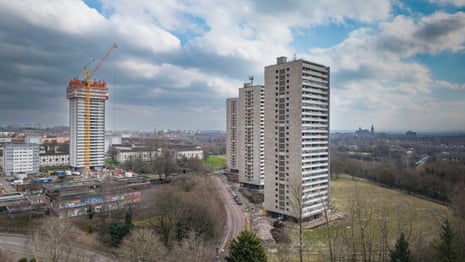
-
The four high-rise blocks of the Wyndford estate one week before demolition. Three blocks were demolished by controlled explosion on 23 March – the block on the left will be brought down floor by floor because of its proximity to other homes on the estate
But 60 years later, part of that vision had faded. Its one-bedroom high-rise flats had become synonymous with short-term tenancies, and labelled a hotspot of neglect and social deprivation. Wheatley Group, Scotland’s largest landlord, argued that the blocks were no longer fit for purpose and should be replaced with modern family homes.
A determined coalition of residents, activists, and conservationists, led by the Wyndford Residents Union (WRU), fiercely opposed the demolitions. At the heart of their campaign was a belief that the destruction of social housing during a housing crisis was not only irresponsible but unnecessary.

-
Henry McLaren, a Wyndford resident and focus group member
Despite the protests, occupations, and legal challenges, Wheatley Group remained steadfast. Aisling Mylrea, the director of Wheatley Homes Glasgow, emphasised that legal challenges had been shut down every time and that all the permissions had been in place for the demolition to go ahead. She said: “Over 85% of the tenants of the scheme support the demolition and the £100m investment that will follow for the area.”
Henry McLaren, a Wyndford resident and member of the Future Focus Group set up by Wheatley, said: “ This will be all good for the community. The words ‘focus’ and ‘future’ are important – everyone needs to stay focused on the end goal.”
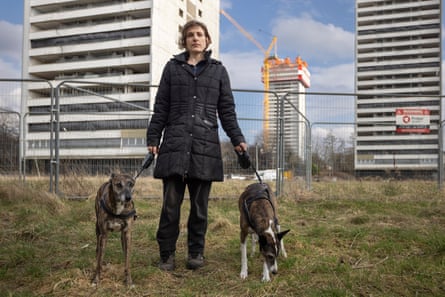
-
Laura Jones, 38, Wyndford resident
From the outset, Wheatley Group insisted that retrofitting the high-rise flats and making them into larger homes was impossible and continually pointed to the declining popularity of high-rise social housing. However, many campaigners disputed the claim that retrofitting was unviable.
A coalition of architects, conservationists and engineers conducted studies suggesting the buildings could have been modernised and repurposed. Malcolm Fraser, a leading architect and campaigner, also called into question the 85% figure cited for support of the demolition, arguing that no alternative to demolition was ever seriously presented. “That number reflects only the few hundred tenants who responded, and they were never given the option of retrofitting,” he said.

-
Caz, a member of Wyndford Residents Union
As the demolition date approached, tensions mounted. For many residents, the stark reality of the controlled explosions in their neighbourhood took centre stage. Fears of further protests and block occupations prompted demolition contractors to station 24-hour security at the entrance to each tower. People living near the demolition site expressed concerns for their homes, and were angered after being offered a £100 Tesco voucher as compensation for vacating their properties for up to 10 hours on the day of the blast.
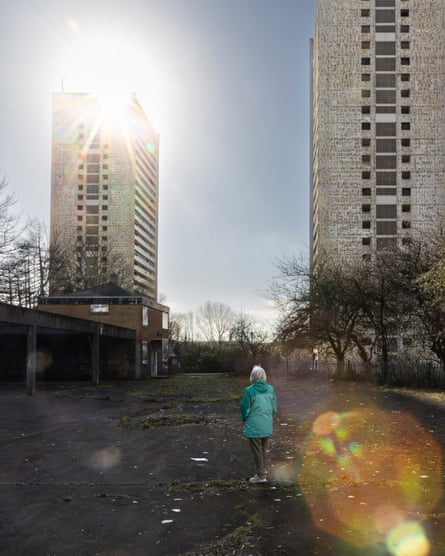
-
Angie Thompson, a Wyndford resident
Wheatley Group assured the residents that all safety measures had been met, stating: “Safedem are world-leading demolition contractors. They have carried out similar demolitions worldwide, ensuring all asbestos and hazardous materials were removed in advance.”
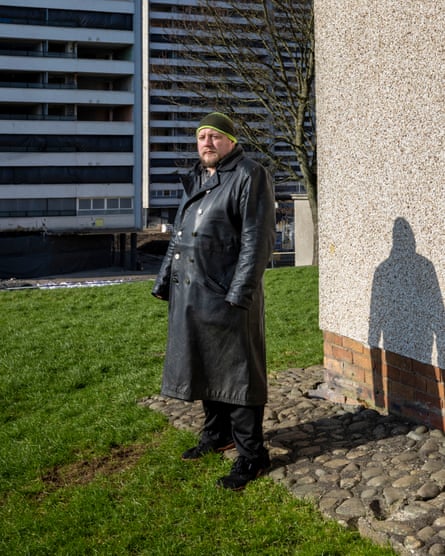
-
Nick Durie, an Alba party politician and member of the Wyndford Residents Union
Wheatley Group says it wants to replace the 600 one-bedroom and bedsit flats with 400 new family homes, citing an urgent need for larger, modern housing in Glasgow. Yet campaigners remain unconvinced that this will truly benefit the community, given the overall reduction in social housing units. As the dust settled on demolition day, Nick Durie, an Alba politician and WRU member, made it clear that the battle was far from over. “This isn’t the end – it’s just the beginning. Our fight will continue long after the demolition. We will protest and challenge every stage of the new development until they commit to replacing all 600 social homes they’ve torn down,” he said.
Beyond the loss of homes, the demolition has drawn criticism from climate activists and architects alarmed by the environmental toll. With an estimated 47,000 tonnes of embodied carbon released in the demolition process, some argue that the destruction contradicts the climate commitments made at Cop26.
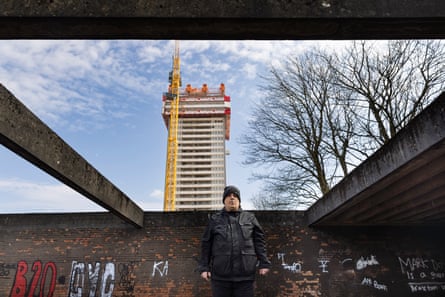
-
William Doolan, a Wyndford resident.
Fraser summed up the frustration: “I know that every building we put up today will last about 40 years. These flats, if properly retrofitted, could have lasted for centuries. We need to stop this cycle of waste and destruction.”
A UK-wide policy that exempts new buildings and demolitions from VAT has only reinforced the preference for demolition over retrofitting. Critics warn that without policy changes, the cycle will continue: “Big business thrives on knocking down old buildings, landfilling them and starting again. And so it goes on and on.”
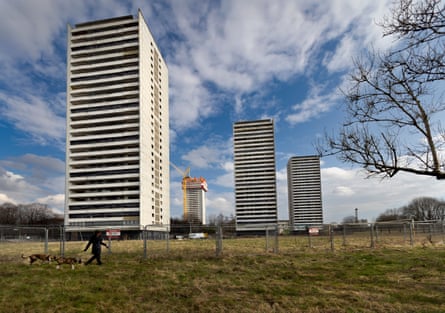
-
The four high-rise blocks of the Wyndford estate one week before demolition
Three of Wyndford’s towers have now been reduced to rubble, joining the many high-rise schemes that have vanished from Glasgow’s skyline. Yet the battle over their legacy – debates on the environmental cost of demolition and the future of social housing – remains far from settled.
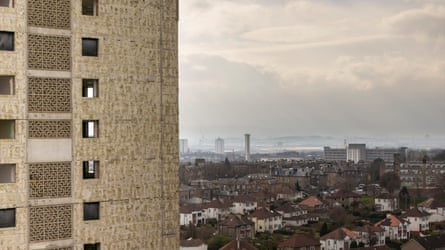
-
The lost view over the city from one of the blocks demolished on 23 March


 3 months ago
30
3 months ago
30



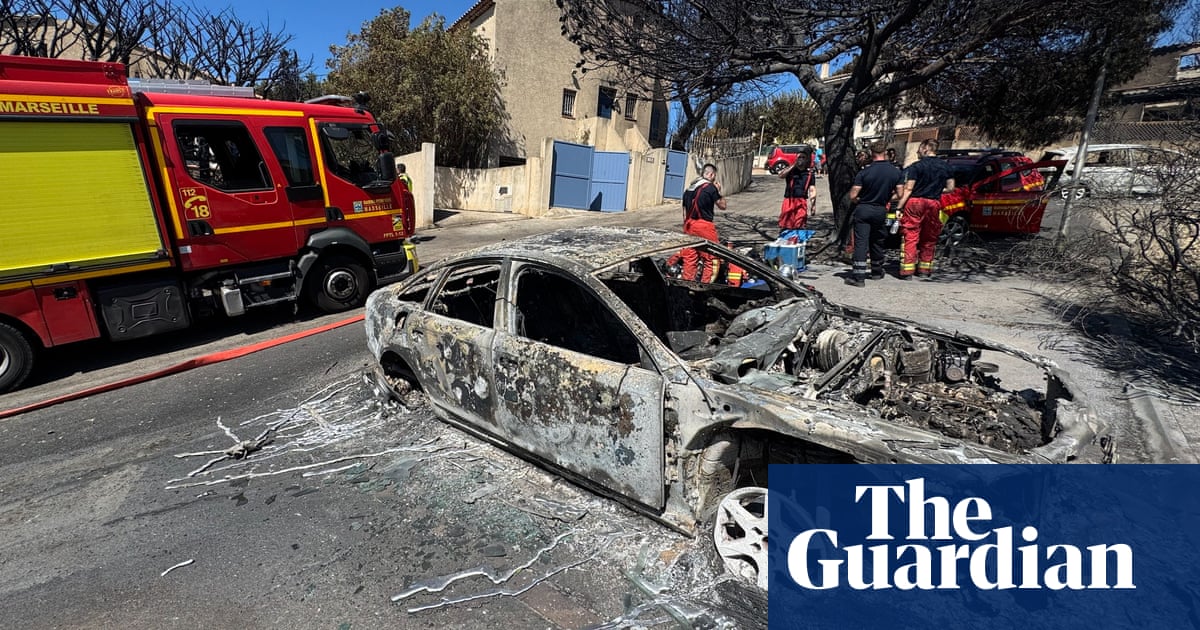
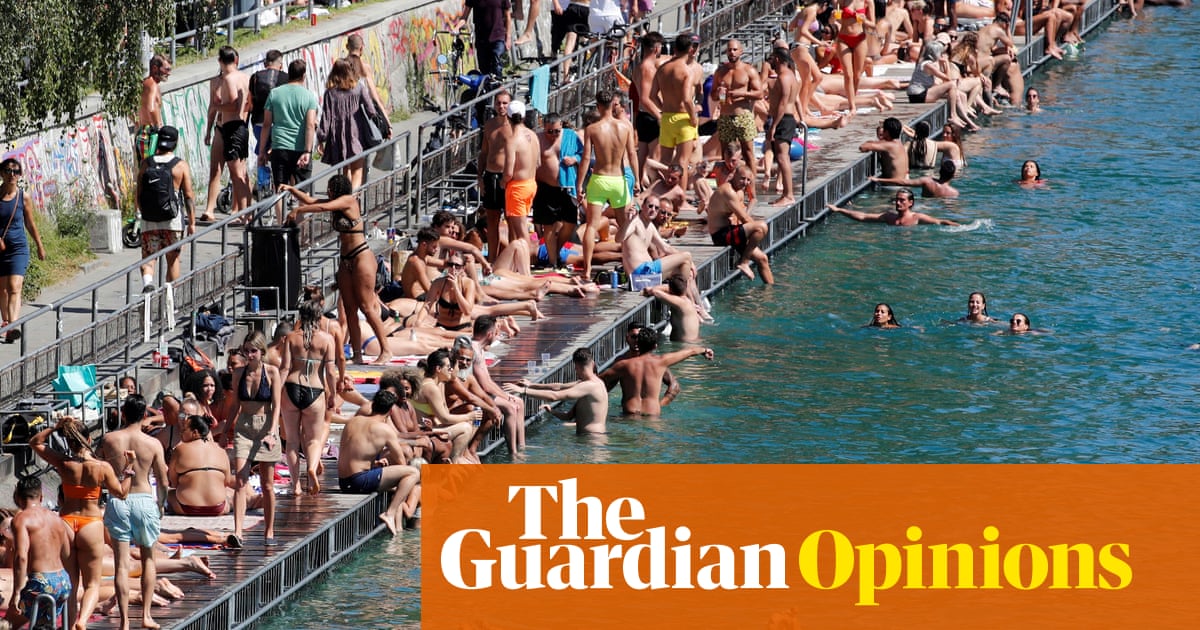














 English (US) ·
English (US) ·  French (CA) ·
French (CA) ·